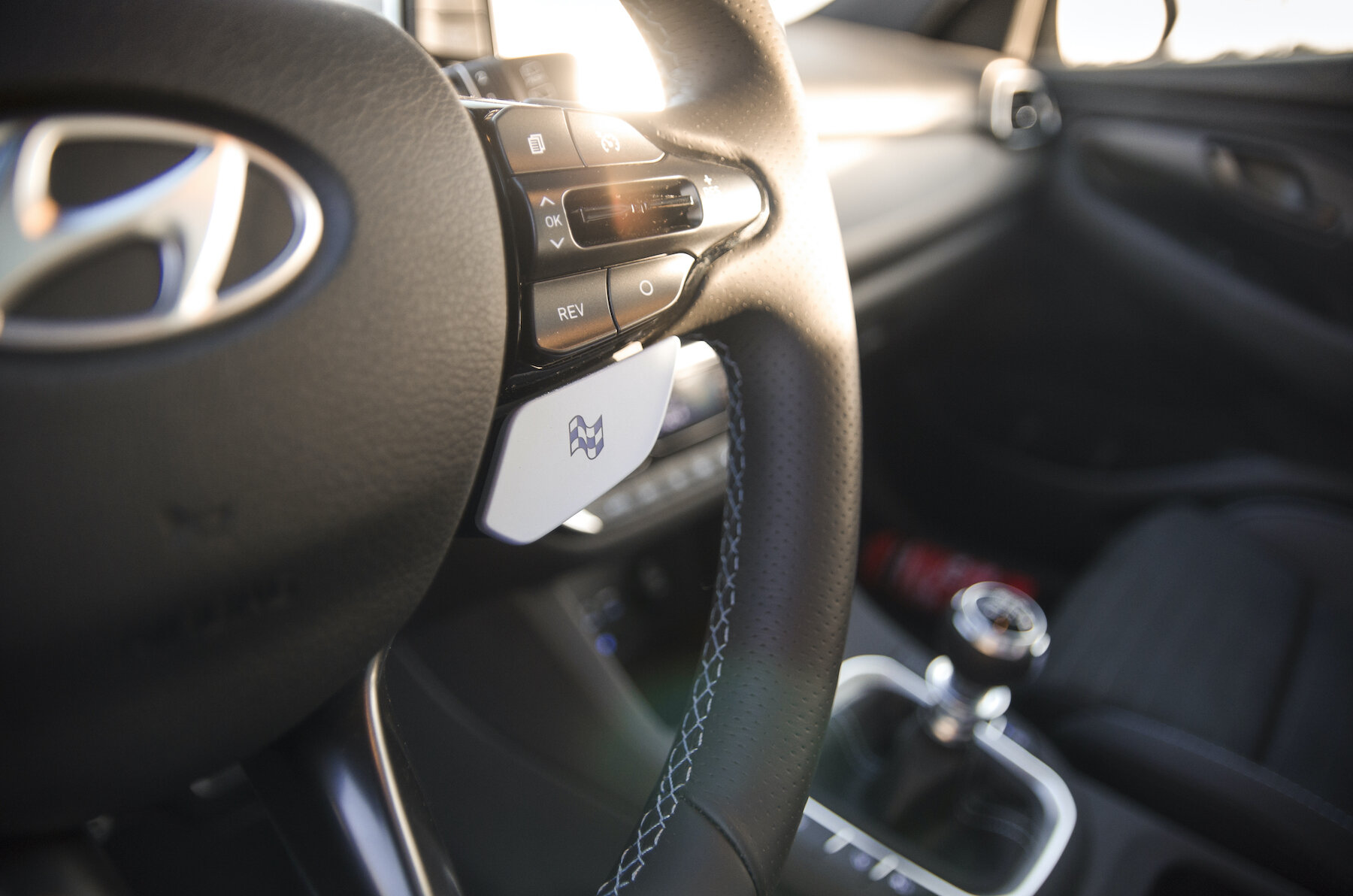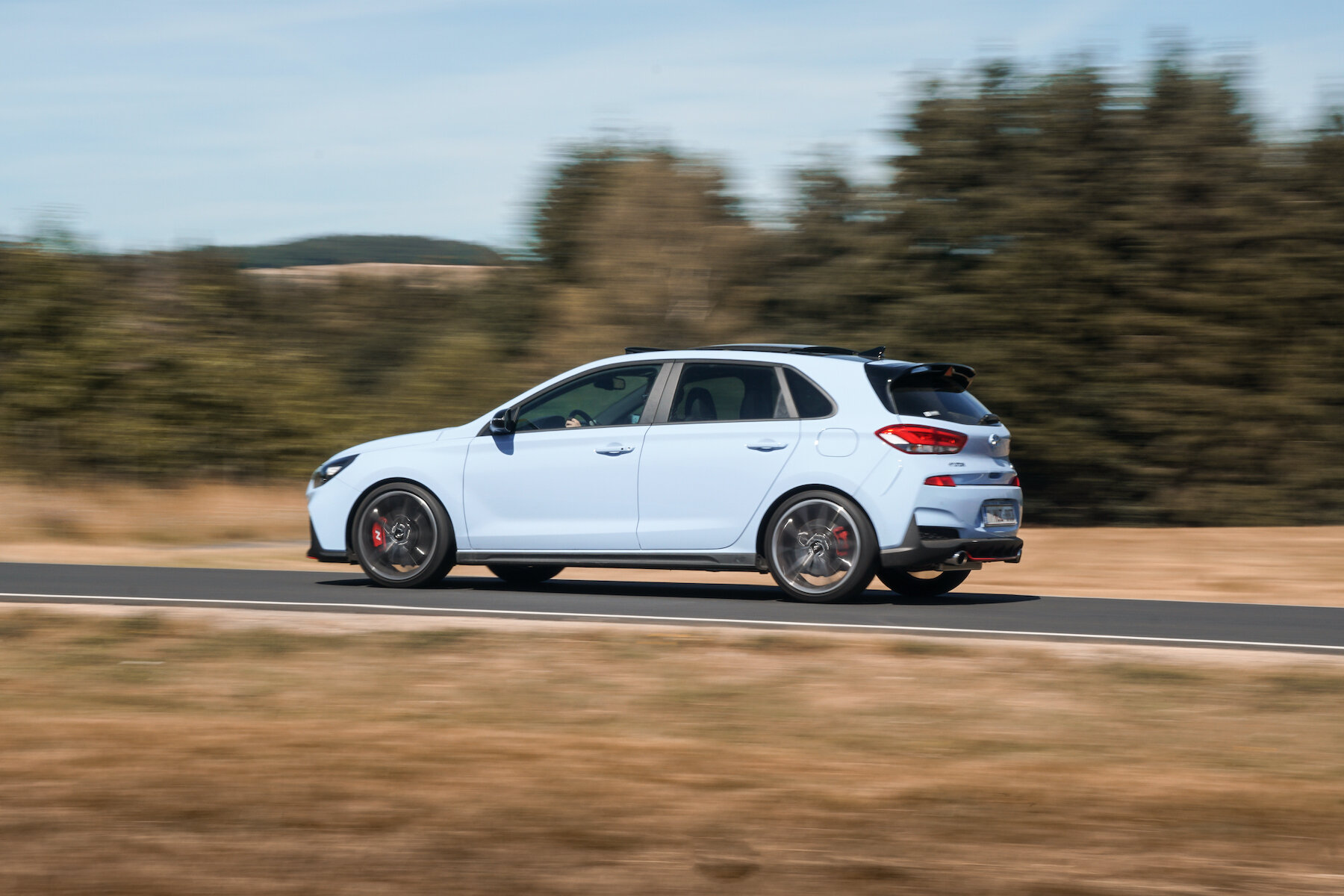Review: i30N Performance |No Additional Power Needed
It’s been a while since we had a quick taste of the Hyundai i30N Performance. This time, we got the opportunity to experience it for a full week. Let's find out what really hides behind the N-badge!
This particular i30N isn’t just any i30N, it's a Performance. This means that it’s got 275 bhp, bigger and wider wheels to fit bigger brakes, and an electronic limited-slip differential. They even went through the trouble of designing bespoke tires in conjunction with Pirelli. The i30N doesn’t really blend in with our recently tested Hyundais. No fancy drive train or weird fuels, just a hot hatch with a proper manual gearbox.
It is a hot hatch, which means it will most of the time be used as a regular car. The interior is mostly plastic but has nice finishes on the things that you touch, i.e. a leather steering wheel, metal inserts on the gear lever, and so on. Good enough for a hot hatch. The seats are not exactly of the ‘huggy’ type, but support very well and provide plenty of comfort, a nice compensation for the stiff suspension. You instantly notice the blue buttons on the steering wheel, that's where the N-fun begins.
The sky is the limit
The twisty roads in the region of Eifel force us to realize right away that its limits are not easy to cross. That is, without breaking the speed limit. Given the fact that the i30N is front-wheel driven, it has a natural tendency to understeer. However, that doesn't mean that it struggles with grip. Both the chassis and differential make up for an impressive efficiency of putting the power down through the 235-wide Pirellis. Hyundai calls this differential 'the - I'm quoting from the brochure here - Corner Carving differential'. You have to believe me that there's no better name for this differential.
The steering is very communicative: no familiarizing needed. It's nicely weighted and really connects the driver to the tarmac. That's what you need in a front-wheel driven car of this caliber. What's more, the early cars' torque steer that sticks in my mind seems pretty much solved. Although the N Performance has the bigger upgraded ventilated brakes (345mm in the front, 314mm in the rear), the braking felt a little unconfident. I never felt the lack of stopping power, but the brakes were not quite as bity as you'd like them to.
German intervention
Most of this, is thanks to the intervention of Albert Biermann, being closely involved with the development of the i30N. You may know Biermann from his previous job - at BMW M. There, he fulfilled the job of chassis developer, only to become the vice president of the BMW M-division. A lot of his experience and expertise made its way to the German-Korean love baby, the i30N.
The N-designation refers to the place this car is developed, - in true BMW M-style - the Nurburgring. Hyundai has its own test facility there since 2013.
Drive line
All of the 275 bhp and 353 Nm is extracted from Hyundai's 2.0 T-GDI engine. A typical turbo engine, defined by some slight turbo lag. That means that downshifts are necessary, more on this later. The engine itself feels refined and smooth. However, the sound it produces makes this car properly anti-social. It takes 6,1 seconds to reach 100 kph and it tops at 250 kph, regular hot hatch stuff, although somewhat slower than recent cars, like the Megane R.S. 300.
The i30N’s gears feel long. So long in fact, that you can almost hit 160 kph in 3rd gear. At first, we felt that the gears should have been shorter ratios. That results in a more engaging drive and – even more important – better acceleration. However, those long gears also require you to work to keep the revs high. On closer inspection, the gearing is well chosen. Push in the clutch, move the gear lever, and let the rev-match function do its job. There you go, 275 bhp at your disposal, and a reward when you get it right.
Too much?
Although its limits aren't easy to cross, you can still have fun with it. It makes the driver very aware of its capabilities, but you don’t have to balance on the edge it to N-joy the i30N. Everything it has to offer is usable. That feeling is enlarged by the number of features the i30N offers, especially the Performance. The shift lights, the rev-match function, and the electronically adjustable diff are a few examples.
To me, the car is defined by the driving modes, which absolutely change the character. Press the button with a chequered flag on it and the suspension becomes full granite. It turns an already not so comfortable car into a spine breaker. However, the connection to the road becomes so good that - even despite the lack of the slightest bit of comfort – it was my favorite driving mode. Press that same button one more time, and you get N-custom, in which you can change every setting yourself. This doesn’t just include throttle response and dampening, but also engine and gearbox characteristics, the LSD, power steering, and the aggressiveness of the rev-match function.
Keeping up
With the exhaust ticking, we take a look back at the car. It’s kind of scary how good Hyundai’s first shot at the hot hatch is. The hot hatch territory is known for the come and goes of new models, but only a few make it to a permanent settlement. The i30N enters the hot hatch market with only 250 bhp (275 for the N Performance), where most rivals put down over 300. It certainly isn't shy of power, but 250 bhp was the benchmark 10 years ago. You might be wondering whether this car still can keep up with the competition? Well, the i30N proves that power isn't everything: this is really an enjoyable piece of kit. In real life, this is quicker than 95% of the cars you come across in traffic. Now is the time for us to wait for Hyundai to facelift it, so we can drive this car once again.
Engine: 2.0 Turbo four-cyclinder
Power/Torque: 275 hp/353 Nm
Acceleration: 6,1 s
Fuel consumption (overall): 10.3 l/100km
Fuel consumption (highway): 7.2 l/100km
Base as tested (BE): €39.199















